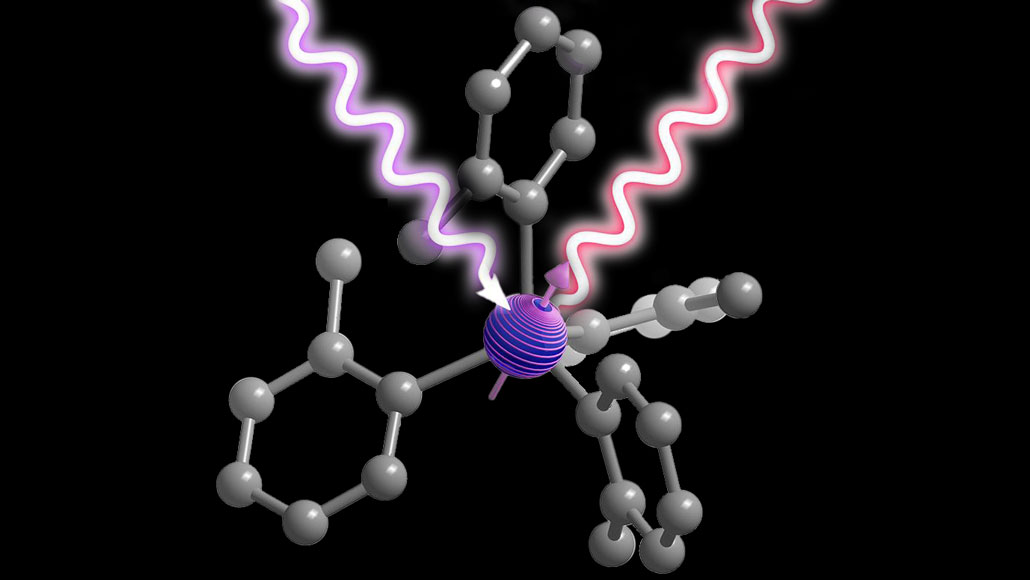‘Designer molecules’ could create tailor-made quantum devices
Researchers are concocting molecules specially suited for use as quantum bits or sensors

A molecule with a central chromium ion (purple) can serve as a quantum bit, encoding information in the direction of its spin (indicated by its arrow in this illustration). Attached atoms (gray) alter the properties of the ion, allowing it to be manipulated by a laser (purple squiggle) and to emit light in response (red squiggle).
Daniel Laorenza/Northwestern University